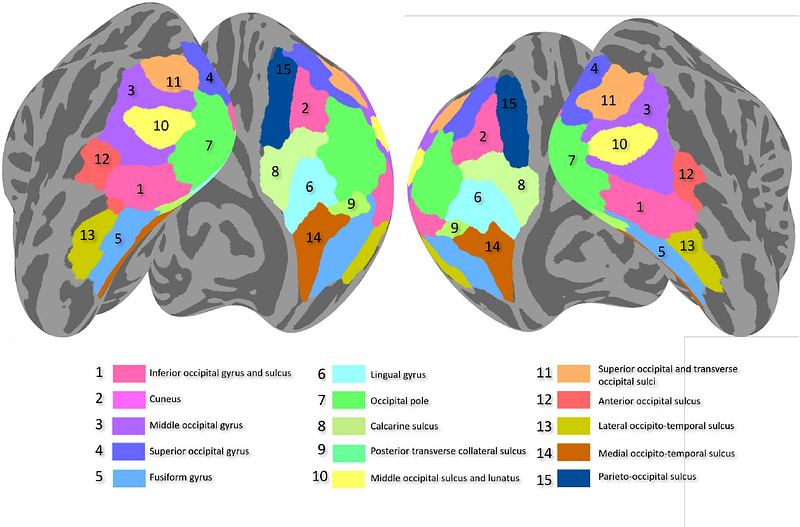Association between Cortical Thickness and Functional Response to Linguistic Processing in the Occipital Cortex of Early Blind Individuals

Association between Cortical Thickness and Functional Response to Linguistic Processing in the Occipital Cortex of Early Blind Individuals
Czarnecka, M.; Hryniewiecka, K.; Wolna, A.; Baumbach, C.; Beck, J.; Vadlamudi, J.; Collignon, O.; Jednorog, K.; Szwed, M.; Stroh, A.-L.
AbstractBlindness has been shown to induce changes in the structural and functional organization of the brain. However, few studies have investigated the relationship between these structural and functional changes. In this study, we examined cortical thickness within occipital regions of interest in 38 early blind individuals and explored its relationship to functional activation during linguistic processing. Participants engaged in tactile Braille reading and auditory processing tasks involving words, pseudowords, and control conditions to assess various aspects of linguistic processing. Linear mixed models revealed a significant association between cortical thickness and functional activation in the occipital cortex during linguistic tasks. Specifically, lower cortical thickness in the middle occipital gyrus, the calcarine sulcus, and the parieto-occipital sulcus were linked to increased activation during orthographic processing in blind participants (Braille pseudowords vs. Braille nonsense-symbols). Similarly, lower cortical thickness in the calcarine sulcus and parieto-occipital sulcus was associated with greater functional activation during phonological processing (auditory pseudowords vs. auditory control). These findings align with prior research suggesting that structural and functional adaptations in the visual cortex of blind individuals may be influenced by developmental mechanisms such as pruning or myelination. This study highlights the interplay between cortical structure and functional reorganization in the blind brain.